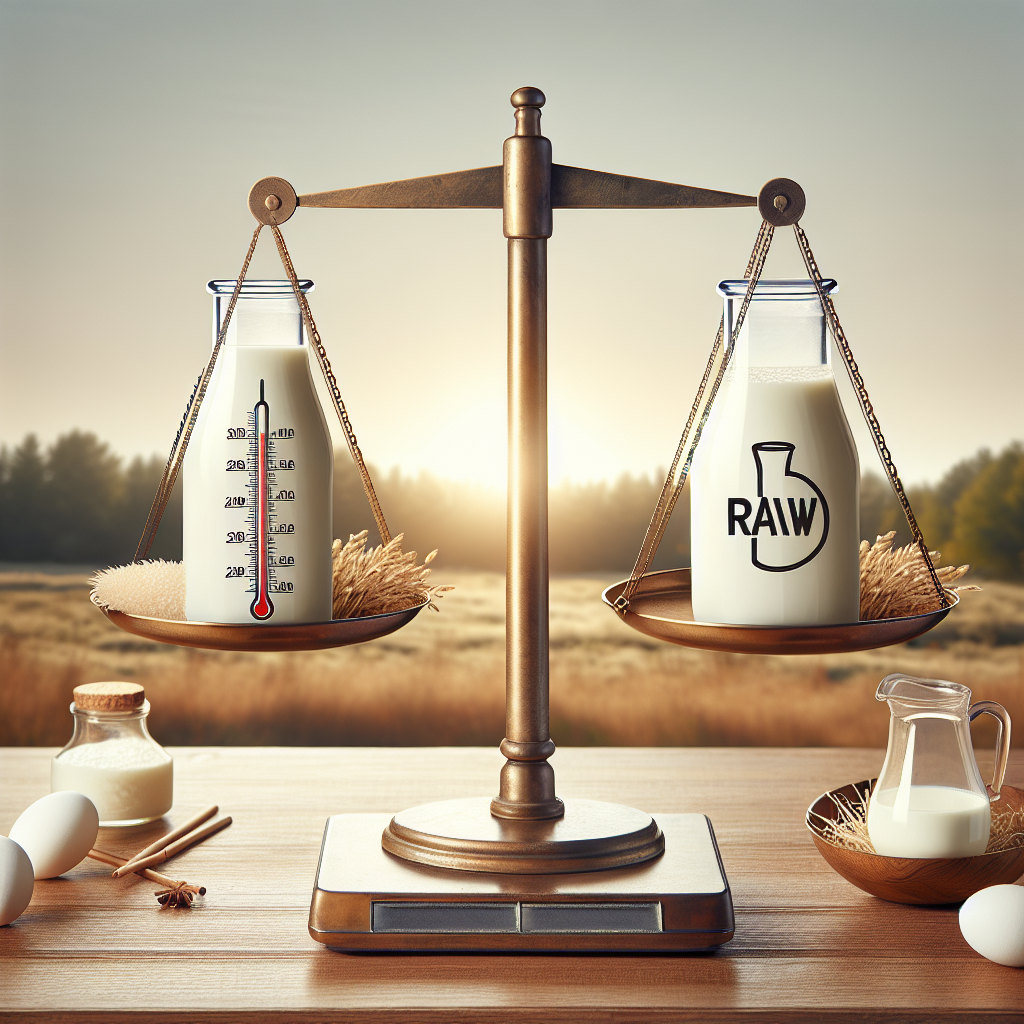Pasteurized or Raw Milk: Which is Healthier?
Milk has always been an essential part of the human diet, especially when children are growing up. Many mothers wonder what type of milk they should choose for their family: pasteurized or raw? These days, with so much controversy and divided opinion, it's difficult to make an informed choice. This article aims to provide a complete guide to the differences between pasteurized and raw milk, as well as the benefits and risks associated with each type, to help you make the right decision for your baby's health.
What is pasteurized milk and raw milk?
Pasteurized milk is milk that has been heated to a temperature of 72°C for at least 15 seconds and then rapidly cooled. This pasteurization process was developed by Louis Pasteur in the 19th century and is intended to destroy harmful bacteria and extend the shelf life of milk. In contrast, raw milk has not been subjected to this heating process, being consumed exactly as it was milked from the cow.
The benefits of pasteurized milk
Pasteurizing milk has the main advantage of eliminating bacteria such as Listeria, E.coli and Salmonella, which can cause serious illness, especially in children, the elderly or individuals with a compromised immune system. Pasteurized milk also has a longer shelf life, which means it can stay fresh in the fridge for a longer period of time, reducing food waste.
Risks associated with raw milk
Although it has proponents who believe that raw milk contains more beneficial nutrients and enzymes, consuming it can carry significant risks, as unpasteurized milk can contain pathogenic bacteria. Children are particularly vulnerable to these bacteria, and foodborne illnesses can have much more serious effects on them.
Nutrients and differences
Some raw milk advocates argue that the pasteurization process destroys some of the milk's vital enzymes and nutrients. Although pasteurization can decrease the levels of certain vitamins, such as vitamin C, this loss is relatively minor and does not affect the overall nutritional value of the milk. On the other hand, raw milk may contain more natural enzymes, which are destroyed by heating.
What do studies and experts say?
Health organizations such as the Centers for Disease Control and Prevention (CDC) and the Food and Drug Administration (FDA) recommend the consumption of pasteurized milk to prevent foodborne illness. They also warn of the risks of consuming raw milk, especially among children, pregnant women and those with low immunity.
Raw milk and children
Since children's immune systems are still developing, they are more susceptible to infections. Moreover, the consequences of a foodborne infection can be much more serious in children. If you choose to give your babies raw milk, it's important to know the source and make sure it comes from farms that have strict hygiene practices.
The right choice for your family
The decision to choose between pasteurized and raw milk should be based on correct information and consultation with a doctor or nutritionist. If you choose raw milk, it is essential to know where it comes from and be aware of the risks. If in doubt, pasteurized milk is a safe and healthy choice for your family.
Conclusion
Ultimately, the choice between pasteurized and raw milk comes down to personal preference, but also your comfort level with the potential risks. It is essential that parents are informed and make informed decisions when it comes to their child's nutrition. Regardless of the choice made, make sure that milk is part of a balanced and healthy diet, thus contributing to the optimal growth and development of your children. If you want to learn more about the benefits of milk and how to integrate it into your children's diet, we invite you to visit our blog for more resources and useful information.














































































































































